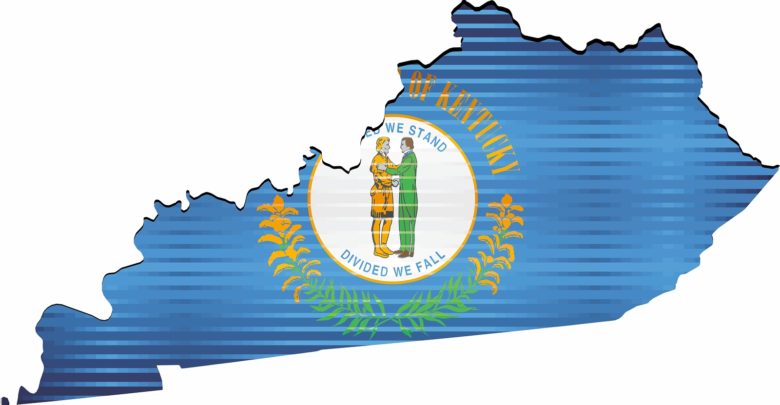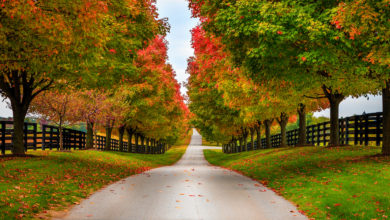Pepsi, Post-Its, and Songs of Celebration
We Bet You Didn’t Know These 6 Things About Kentucky

For most people, a healthy, lush lawn evokes images of thick, green grass. From bent to Bermuda, from rye to fescue, there is no shortage of turf breeds. Though, perhaps the most well-known is the famed Kentucky bluegrass which, of course, is not actually blue. If you’ve ever wondered why it’s called that, it is because when the sprouts are seeding in the spring they produce a bluish-purple bud that, from a distance, gives the landscape a blue hue. It is widely considered the most popular grass in America, even though it was originally imported from Europe and not a product exclusive to Kentucky. Here are a few more facts we bet you didn’t know about the “Bluegrass State”.

1. The First Cheeseburger Was Served Here
Technically, the first restaurant to have served a burger topped with cheese is believed to be the Rite Spot in Pasadena, California. At that time, however, it was called a “cheese hamburger”. It wasn’t until 1934, nearly a decade later, that Charles Kaelin would add a “cheeseburger” to the menu at his namesake restaurant in Louisville.

According to Kaelin’s daughter, the Swiss-American diner owner hatched the idea one day while serving burgers to school kids as a way to add more “tang” to the beef patty. It was, of course, an instant success and became a mainstay on the menu for more than 70 years, until the restaurant closed in 2009. However, as luck would have it, the business was recently resurrected as 80/20 Kaelin’s by a pair of local restauranteurs hoping to carry on the tradition of the community’s iconic cheeseburgers and quality fried chicken, as the original Kaelin’s was also the first Louisville eatery to serve Colonel Sanders’ famed Kentucky Fried Chicken.

2. The Happy Birthday Song Originated Here
Once dubbed by the Guinness Book of World Records as the most recognized and frequently sung song in the English language, the unmistakable melody of this beloved traditional tune was originally composed by a pair of sisters from Louisville back in 1893. Patty Hill, a kindergarten principal, and her pianist sister Mildred’s original arrangement was entitled “Good Morning to All”, a number they conjured that could easily be sung by young school children. As time went on, the students at Louisville Experimental Kindergarten School began to sing different variations of the song, substituting “Happy Vacation to You”, “Goodbye to You”, and eventually “Happy Birthday to You” into the lyrical accompaniment. As the song gained popularity, the one critical mistake the sisters made was in not copyrighting these lyrics, leading to numerous legal battles and unsettled claims of ownership. The lyrics were eventually copyrighted in 1935 by the Summy Company, which was later acquired by Warner Communications in 1988. At one point, it was said that the royalties collected off the song made it the highest-grossing single in history. In 2015, however, the copyright was invalidated by a federal judge, putting “Happy Birthday to You” into the public domain and making its use free to anyone and everyone.

3. They Drink a Lot of Pepsi in Pikeville
Pepsi-Cola may be the country’s third most popular carbonated soft drink (behind Coca-Cola and Diet Coke), but in this small town in far eastern Kentucky this bubbly beverage reigns supreme. With a population hovering somewhere around 7,000, the people of Pikeville consume more of the soda (or “pop”, depending on where you’re from) annually than anywhere else in the country. It’s unclear exactly just how much of the carbonated drink is consumed by locals each year, though per capita it is believed to be more than enough to make this the Pepsi capital of the world. Perhaps that explains why the company relocated a nearby distribution center from Stollings to Pikeville.

4. Odds Are Your Post-It Notes Came from Here
If that little pad of yellow sticky notes sitting on your desk is the unmistakable Post-it Note and not one of the many imitations that have flooded the market since the company’s patent expired in the late 1990s, then it was most likely produced at the 3M plant in Cynthiana, which has been in operation since 1969. An invention of the combined efforts of Spence Silver (who came up with the adhesive during the 1960s) and Art Fry (who had the epiphany of utilizing the adhesive to place a moveable bookmark in his hymnal), the Post-it brand has become an office supply staple due to its convenience and versatility. Many of this small town’s 6,000 residents work at the Cynthiana plant, which produces more of the 3×3 pads (which are now available in a wide variety of sizes and colors) than anywhere else in the world, though the precise number manufactured here is a trade secret. The vast majority of the company’s Scotch tape is also produced at this facility.

5. It Was Instrumental in the Popularization of Electric Light
After Thomas Edison developed his first incandescent light bulb in 1879, the Louisville Board of Trade contracted the former local boy to provide 5,000 bulbs for the Southern Exposition, which would turn out to be a five-year series of fairs held within the city to showcase industrial breakthroughs and merchant wares. Forty-six hundred bulbs were installed to shed light on the exhibition hall, while the remaining 400 would illuminate the art gallery in what would become, at that time, the largest installation of Edison’s innovation. The inventor himself personally oversaw the project, which had an enormous impact on the rampant growth of interior lighting in the United States.

6. It’s Home to a Town Built Within a Meteorite Crater
The town of Middlesboro (also sometimes spelled “Middlesborough”), which lies near the Cumberland Gap between Pine Mountain and the Cumberland Mountain and boasts a population of some 10,000, is actually nestled in the basin of a meteorite crater. This astrobleme (which literally translates to “star wound”) was produced by an enormous otherworldly impact that formed a depression within the bedrock and is one of three such impact structures within the state, though it is the only one to have had a town erected within it. In fact, it is believed to be the only town in the country carved out of a crater.




